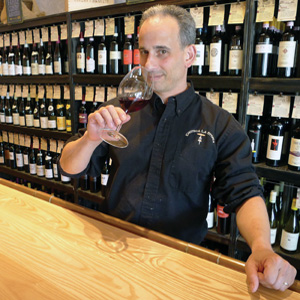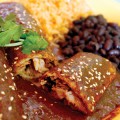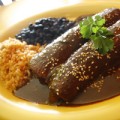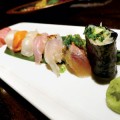As a new restaurant owner, Joe Cannistraci had an enviable problem: crowds.
When he and partner Michael Guerra opened Enoteca La Storia in Los Gatos a year ago, he expected it would take time for the business to catch. He was wrong about that, but right about just about everything else. Almost from the day he opened the door, people crowded into the wine bar, restaurant and retail shop.
“When people had to wait for a seat, we didn’t know what to do and how to handle it,” he says. “Eventually, we started pouring people a little something to drink while they were waiting. It helped. We didn’t expect to be as popular as we were. We expected the worst. We expected to be in the trenches for a minimum of three years.”
So how’d they do it?
What he got right was settling on a concept that resonated with Silicon Valley, setting prices right, doing a lot of the work himself and attracting a knowledgeable and friendly staff. He and Guerra also learned from their Italian grandparents, who came to America as immigrants. Cannistraci took to heart lessons like “If you don’t have it, don’t spend it” and “Don’t let the banks get their hooks into you.”
It helps, too, that Enoteca La Storia’s wines and menu of charcuterie, Italian cheese, salads and other small-plate items are quite good.
Opening a restaurant is a risky proposition in the best of times. Statistics vary, but a study conducted by the Cornell Hotel and Restaurant Administration Quarterly in 2005 found that more than a quarter of all new restaurants closed or changed hands in the first year. In year two, the figure jumped to 60 percent. So you might think that opening a restaurant during a recession would be suicidal.
But Enoteca La Storia and a new crop of Silicon Valley restaurants have challenged the conventional wisdom and have not only survived, but thrived in what is supposed to be an anemic economy. What’s their secret sauce?
Enoteca La Storia
The concept behind Enoteca La Storia isn’t new. It’s a 150-year-old model common in Italy, where most wineries don’t have tasting rooms so they showcase their wines at a regional enoteca that also serves small bites of food. It’s a one-stop shop for local wines.
“There’s no magic to it,” says Cannistraci. “It just made sense.”
As a perennial optimist, he says when it came to starting a business at the bottom of a recession, it smacked of opportunity.
“I said now’s the time. If you can start a business now, it’s going to be easy to find the location. Local politics are going to be much more relaxed. … Construction was at all-time low as far as costs, so it just seemed like the right time. Not being leveraged by banks looked to me like it was a great time to start a business.”
That may all be true, but without customers coming through the door none of it matters. But fortunately for Cannistraci and Guerra, the customers continue to come.
“We just hit a nerve,” Cannistraci says. “We just stuck to the model of an enoteca. I think there was a need for it and we just put it together.”
Tu Mero Mole
Between a go-kart supply store and a dive bar probably wouldn’t be the first place one might look for regional Mexican cuisine, but some of the best food in Silicon Valley is found in unlikely places. Tu Mero Mole is cozy, bright and always bustling. Co-owner Maria Flores oversees the counter, answering the phone, chatting with customers and putting in orders—all with a smile.
Flores opened Tu Mero Mole 18 months ago with her husband, Ignacio Flores, owner of Andale restaurants in Los Gatos. Since then, the restaurant has become more hers each day. A self-taught cook, Maria Flores has as her goal the desire to offer quality and reasonably priced food highlighting the local specialties of different regions of Mexico. And that she does. Deliciously.
Tu Mero Mole didn’t start out as a restaurant. The original plan was for just catering.
“A friend of mine told me about this location, and I said, ‘Wow, this is great.’ The rent is reasonable and they already have a commercial kitchen.”
Just like that, the restaurant was born. The change in plans wasn’t without its struggles, however.
“Once we decided we were going to also open as a restaurant, it was very tough,” says Maria Flores. “I’m going to be honest. The first year I thought we weren’t going to make it because it’s not a prime location.”
True, the restaurant is somewhat hidden and doesn’t have the benefit of foot traffic, but she stayed positive.
“If you believe in yourself and what you’re cooking, you can do good.” Word spread about her top-notch food, and the tables are almost always full. Despite the risk, the addition of a restaurant may have actually given the catering business an extra push. It has allowed people to come in and casually taste their food before placing a catering order—they have received quite a following this way.
Something else that sets them apart is the combination of quality and prices. Opting out of a downtown location has allowed the Floreses to serve authentic Mexican food of the highest caliber.
“People always ask me what Tu Mero Mole means,” she says. “It means ‘for your enjoyment,’ and it refers to the food, but it’s also more than that.”
Treatbot
Treatbot’s success as a restaurant may be explained in part by the fact that’s it’s not a traditional restaurant. It’s a beautiful red-and-chrome food truck that happens to serve great desserts alongside a mobile karaoke machine. How’s that for a cutting-edge restaurant concept?
A karaoke ice cream truck may seem like a strange business venture, but to Ryan Sebastian and his wife, Christine, it made perfect sense. His background is in city planning, while his wife is a chef.
“The idea of Treatbot was just an outcome of our interests and training,” Ryan Sebastian explains. “The karaoke part was more of a joke.”
He hails from the Philippines, where karaoke is everywhere and is taken rather seriously.
With the wave of recent restaurant closings, it’s a wonder anyone would open a new restaurant. But Ryan Sebastian thinks the time is right.
“I think it’s a great time to start a business like a food truck,” he says. “Tons of great people want to work for you, and everything is discounted off what it would have been three or four years ago.”
He sees only upsides to the shaky economy. “If you’re doing something no one else is doing, and the other major players are in crisis, that’s the time to step in.”
He and his wife were confident and wanted to show they didn’t need to be in San Francisco or Berkeley to make their idea a success. They were right. After less than a year in existence, Treatbot is hugely popular, so much so that it served as the catalyst for creating the largest (and only) food-truck festival in San Jose, SJ Eats, this past weekend.
In a city where street vending isn’t even legal, what made Treatbot such a hit? Ryan Sebastian believes it’s the nature of San Jose itself.
“We think people love it because it’s like a social space … and there’s really a weakness of that in San Jose. That’s why people spend too much time working. Because, what else would you do? You could go to the mall, you could go to a bar, you could stay home and watch American Idol—but in terms of really interacting with people, there’s not enough of that.”
Checking out Treatbot for the first time? Try the “churro,” a horchata ice cream sandwich made with two snickerdoodle cookies.
Station 1
The general consensus among many restaurant industry watchers is that high-end restaurants are the riskiest. So how do you explain the success of 6-month-old Station 1 in Woodside, an intimate but cozy restaurant that’s a showcase for chef Zack Freitas’ highly technical, post-modern cuisine?
Owners Zu and Kristi Tarazi, restaurant industry veterans but first-time restaurant owners, seem to have read the market perfectly. The food at Station 1 is definitely high-end. Chef Freitas worked at Manresa, WD-50 in New York City and Commis in Oakland.
Freitas employs a few modern techniques, such as dehydrating slices of prosciutto, infusing radishes with honey and maple syrup and pressing pomelo juice into blocks of pomelo rind. But his culinary tricks are subtle and don’t crowd into the foreground. Freitas’ food walks a delicate balance between spare and ornate, flashy and stripped down.
Station 1’s front-of-the-house staff is top-notch, too. Given the brief menu descriptions, it’s up to servers to describe each dish in great detail, and they know the food well and speak about it with enthusiasm.
What makes Station 1 different is the three-course prix fixe menu, which goes for $49, and the 100-year-old building that once housed a fire station feels as warm and inviting a country cottage. The restaurant provides the best of both worlds: sophisticated food at a great price served in a setting that’s anything but pretentious. It’s a white-tablecloth restaurant without the white tablecloth.
“We wanted to let the building shine for what it is,” says Zu Tarazi.
“A lot people said we’re crazy for doing it,” he adds. “But so far, we’ve been very fortunate. There was a need for new energy on the peninsula.”
He says that people are now smarter about their money because they have to be. “Consumers want bang for their buck.”
At Station 1, that means a great product at a great price. That will never go out of style.

 Food & Wine Events: April 6-13
Food & Wine Events: April 6-13  Ghost Fights for Superstar Status
Ghost Fights for Superstar Status 


